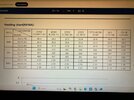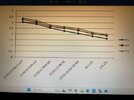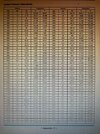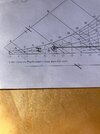- Joined
- May 27, 2021
- Messages
- 1,162
- Age
- 64
- Location
- Coquitlam British Columbia Canada
- Bike
- 2009 ST1300
Looking on Amazon there is a Senville brand 18,000 single zone mini split for $1,300.00 wondering if anyone has used that brand. A lot cheaper than anything I can get locally.
[added] Senville Manual shows that it can control to 8C in some sort of low limit mode so maybe that's the 8C that I was guessing around. It seems to say you can leave it off, and if it senses 8C, it will start up.
Charts appear to show that for R410A, in an outdoor air condition of -8.33C DB, and -10.56 WB, Port Pressure [which I have to assume is Suction Pressure] will be 302, 339 and 362 psi at in indoor [air entering the coil] at 55, 65 and 75F respectively. Assuming zero pressure drop those pressures translate to about 34C, 38.5C and 41.35C SST or mean evaporator temperatures. The chart, I assume is a COP chart, which indicates a COP ratings of 1.95, 2.25 and 2.35 at 55, 65 and 75F.
Similar COP with their R32 charts. And not much reduction in performance at -17C DB and -19WB.
Two kilowatts [or more] for the price of one down to about -10C outside is pretty good.
[added] Senville Manual shows that it can control to 8C in some sort of low limit mode so maybe that's the 8C that I was guessing around. It seems to say you can leave it off, and if it senses 8C, it will start up.
Charts appear to show that for R410A, in an outdoor air condition of -8.33C DB, and -10.56 WB, Port Pressure [which I have to assume is Suction Pressure] will be 302, 339 and 362 psi at in indoor [air entering the coil] at 55, 65 and 75F respectively. Assuming zero pressure drop those pressures translate to about 34C, 38.5C and 41.35C SST or mean evaporator temperatures. The chart, I assume is a COP chart, which indicates a COP ratings of 1.95, 2.25 and 2.35 at 55, 65 and 75F.
Similar COP with their R32 charts. And not much reduction in performance at -17C DB and -19WB.
Two kilowatts [or more] for the price of one down to about -10C outside is pretty good.
Attachments
Last edited:







